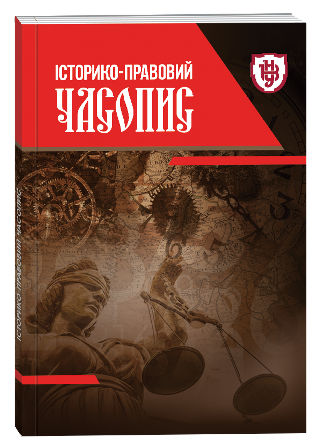Польська банківська система після Другої світової війни (частина 1)
Ключові слова:
банківська система; банки; банківське право; ПольщаАнотація
Банківськамодель і банківське право Польщі були предметом глибоких змін після Другої світової війни і спрямовані на «ідеологізацію» у цих областях. За спостереженням автора усі позитивні тенденції, започатковані до 1939 р., були скасовані і процес пішов у негативний бік. Розпочався процес перейменування і націоналізації банків, передбачалась повна підпорядкованість державі і партійному апарату. Було створено нові банківські установи, наприклад, Національний банк Польщі, діяли і довоєні установи, зокрема, Банк господарства крайового. Принципове значення відігравало правове регулювання Розділу Сьомого «Особливі права банків» Указу Національного банку Польщі від 15 січня 1945 р., що створювало цілком нові умови функціонування банківської системи у Польщі. З тієї пори Національний банк Польщі був звільнений від усіх державних і місцевих податків, а також від усіх державних мит. Усі банківські правочини був звільнені від гербових зборів, банківські документи та витяги із них, завірені банком, мали доказове значення як офіційні документи. З іншого боку, що особливо важливо, банківські документи, що підтверджували зобов'язання, були достатньою підставою для їх примусового виконання, оскільки мали таке ж значення і юридичну силу, як виконавчі листи. Місцеві суди визнавали і застосовували у своїй практиці банківські документи, що підтверджували зобов'язання, відповідно до положень Цивільного процессуального кодексу.
Посилання
Nationalised banks have become a tool of state policy, and above all - economic plans. Since then, banks aim was to perform the assumptions made by the ruling party and the state. In such a situation, competition among banks was considered, for obvious reasons, as undesirable. In order to achieve the objectives required by the State only few banks were needed. Therefore, the process of combining banks started and what goes with it their number was constantly lowered. For more on this: Jaworski W. Nationalization of banks in Poland / W. Jaworski // Finance. – 1957. – Vol. 9.
Dobosiewicz Z. Basics of banking / Z. Dobosiewicz. – Warsaw, 2001. – P. 17-18; C. Kosikowski C. Public banking law / C. Kosikowski. – P.31 and next.
Gliniecka J., Harasimowicz J., Krasnodębski R. Polish Banking Law (1918 - 1996) / J. Gliniecka, J. Harasimowicz, R. Krasnodębski. – Warsaw 1996. – P.14 and the literature mentioned there.
Journal of Laws. – 1944. – №.3. – Іtem 11.
According to A. Jezierski and C. Leszczyńska in the post-war historiography it was treated as the first «folk» issuing institution whose role focused on collecting tickets brought from Moscow. For more on this topic see: Jezierski A., Leszczyńska C. The first years of activity the Narodowy Bank Polski. The birth of communist financial system in PRL / A. Jezierski, C. Leszczyńska. – Warsaw, 1996. – P. 14-15.
Journal of Laws. – 1944. – №.7. – Item 39.
Węcławski J. The banking system in Poland / J.Węcławski. – Rzeszów, 2000. – P. 46-48; Miedziak S. Banking and fundaments of financial market / S. Miedziak. – Warsaw, 2003. – P. 32-36.
Landau Z. Financial policy of PKWN / Z. Landau. – Warsaw, 1965. – P. 79.
This author states that the statute of NBP was indeed modelled on the Bank Polski memorandum of association but significant differences can be shown in both legal acts. NBP was the only state-owned bank, rather than equity, private, such as Bank Polski. The board of the Bank was appointed by the government, and not by the shareholders, stock issue of the NBP was not limited by the stock of their gold and its amount must only be approved by the government. In the end, the NBP could make loans not only on the pledge of securities, but also the pledge of goods and debentures of bank surety. For more information see: Gliniecka J., Harasimowicz J., Krasnodębski R. Polish Banking Law (1918- 1996) / J. Gliniecka, J. Harasimowicz, R. Krasnodębski. – Warsaw, 1996. – P. 20-21.
See extensively explained position: Mikos A. The political position of the central bank in Poland / A. Mikos. – Warsaw, 2006. – P. 55-59.
Polish Monitor. – 1951. – № A-92. – Іtem 1272.
Polish Monitor. – 1952. – № A-10. – Іtem 103.
Journal of Laws. – 1948. – № 52. – Іtem 410.
Journal of Laws. – 1945. – №.4. – Іtem 14.
Narodowy Bank Polski gradually incorporated other functioning banks and as a result became the largest Polish commercial bank. By the resolution of the Komitet Ekonomiczny Rady Ministrów dated 8 February 1946 NBP took over short-term lending of three main branches of the economy from BGK , ie. metallurgy, mining and textile. These and other decisions established NBP as the central bank and gave it the status of «bank of banks». For more information, see.: Gliniecka J., Harasimowicz J., Krasnodębski R. Polish Banking Law (1918-1996) / J. Gliniecka, J. Harasimowicz, R. Krasnodębski. – Warsaw, 1996. – P. 21; Dobosiewicz Z. Basics of banking / Z. Dobosiewicz. – Warsaw, 2001. – P. 17-18, C. Kosikowski C. Public banking law / C. Kosikowski. – P. 35.
Journal of Laws. – 1948. – № 52. – Іtem 412.
Journal of Laws. – 1948. – № 52. – Іtem 410.
Journal of Laws. – 1948. – № 52. – Іtem 411.
Journal of Laws. – 1951. – № 18. – Іtem 143; See also text of the Act of 29 May 1957 on the amendment of the Decree of 25 October 1948 year on banking reform , which slightly modified the original text of the Decree: Journal of Laws. – 1957. – № 31. – Іtem 136.
Polish Bank as a private bank, despite having status of a public limited company on 7 January, 1952 , was liquidated, as was mentioned above in more detail. Whereas the intention of the appointment of Bank Handlu Zagranicznego was not realized.
Before the Act from 22 March 1951 on amending the legislation on the reform of the banking took effect supervision of cooperative banks was performed by the Minister of Treasury.
##submission.downloads##
Опубліковано
Як цитувати
Номер
Розділ
Ліцензія

Ця робота ліцензується відповідно до Creative Commons Attribution-NonCommercial 4.0 International License.







